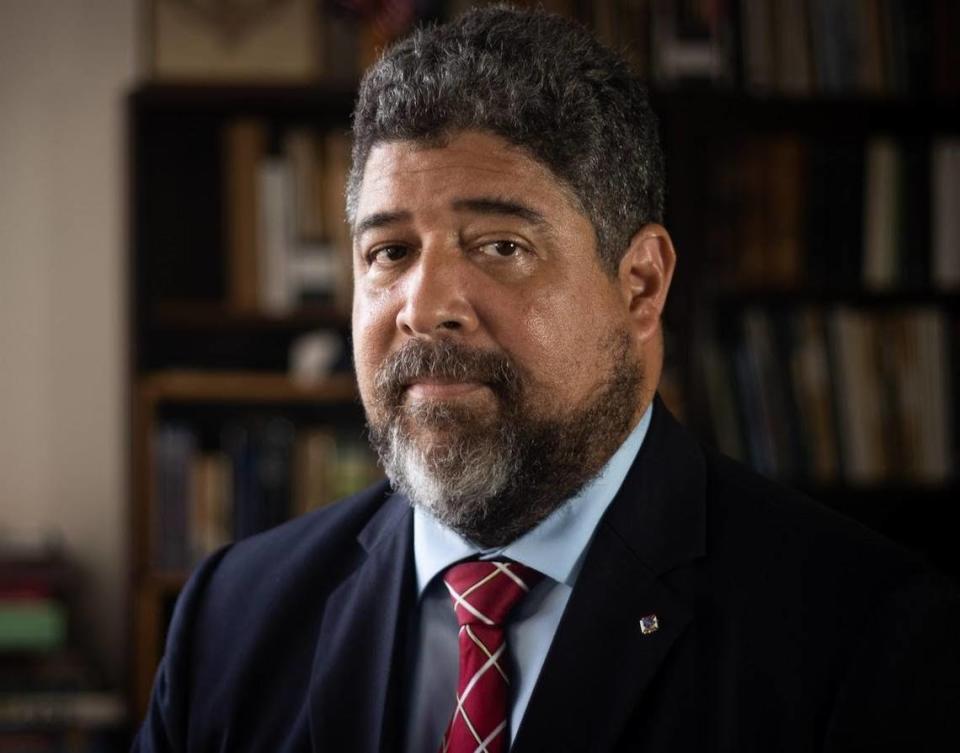In the 1950s, Cubans soon learned the Moncada attack was nothing to celebrate | Opinion
On July 26, at 5:00 a.m., Raúl Castro, age 92, Ramiro Valdés, 91, and Guillermo García Frías, 95, presided over the celebration of the 70th anniversary of the assault on the Moncada military barracks in Santiago de Cuba. It was a violent act that led to the formation of the July 26th Movement and helped establish a dictatorship with Fidel Castro as its leader.
By contrast, 75 years ago, a delegation representing the Cuban Republic helped draft the Universal Declaration of Human Rights at the United Nations. That republic provided an eight-hour work day; the right to strike; and university autonomy. The island enjoyed a large number of newspapers and radio stations with diverse political and ideological viewpoints. This year, Cuba is observing the Declaration’s 75th anniversary with a new draconian penal code and more beatings and arrests of dissidents.
After Fulgencio Batista’s coup ended Cuban democracy on March 10, 1952, Cubans fell for Fidel Castro, a charismatic young lawyer who promised to return constitutional order. Following the July 26 Moncada attack in 1953, the July 26th Movement’s urban terrorism killed Cubans throughout the rest of the decade. Raúl Castro plotted numerous aircraft hijackings. On Nov. 1, 1958, one such skyjacking killed 17 civilians when the plane crashed.
The United States slapped an arms embargo on the Batista dictatorship in March 1958, thanks to Castro’s July 26th Movement’s lobbying, and in December 1958, the U.S. ambassador in Havana pressed Batista to leave.
On Jan. 1, 1959, Fidel Castro rose to power and was quickly recognized by the United States. Raúl Castro remains there today.
What happened to the Cubans who, in good faith, used violence to effect democratic change?
Mario Chanes de Armas, for example, who survived the Moncada attack, served prison time with Fidel and, like Castro, received amnesty, went to Mexico to train and returned to Cuba on the Granma yacht to unseat Batista. Chanes could have taken any position in the new regime, but he chose to return to his brewery work. After watching Castro betray their movement, Chanes spoke out against communist influence. In 1961, Chanes was prosecuted as a counterrevolutionary and imprisoned for 30 years. He died of Alzheimer’s in 2007 in Miami, after being released in 1991 and going into exile in 1993.
He was not the only one to follow this trajectory; others took up arms again.
The men and women who battled Batista’s dictatorship, many of them in Castro’s July 26th Movement, hoped for the restoration of Cuba’s 1940 Constitution and its republic. This is what Fidel promised in his “History will Absolve Me” speech at his trial for the Moncada assault. They got a totalitarian dictatorship, instead. They then fought Castro for six years in a civil war with substantially higher casualties on both sides than during the struggle against Batista. About 400 Soviet advisers assisted Castro in crushing the resistance. The opposition ended up in exile, imprisoned or executed.
It was within the prison cells that Cuba’s human-rights movement was forged.
This movement understood the potential of nonviolent resistance, demonstrated by the Rev. Martin Luther King Jr. The resistance practiced it in Castro’s prisons and saw it as a means of mobilizing Cubans. It became a national civic movement to challenge Castro’s monopoly, educate citizens, rebuild democratic culture, reclaim human rights, refuse to accept injustice and oppose repression. Members reveal the dictatorship’s own contradictions by insisting that it adhere to the democratic provisions in its own constitution.
The communist dictatorship refused to follow Russian President Mikhail Gorbachev’s reforms, believing that glasnost and perestroika would bring an end to its rule. They understood that nonviolent leaders would provide an alternative to their regime and had them murdered.
One high-profile case was the July 22, 2012 assassination of pro-democracy leaders Oswaldo Payá and Harold Cepero. Payá and his Christian Liberation Movement amassed over 30,000 signatures for the Varela Project petition calling for human rights reforms, organizing tens of thousands of Cubans and attracting international attention. Payá was a Sakharov Laureate, twice nominated for the Nobel Peace Prize.
Fidel Castro became sick in 2006 and handed down power to his younger brother. The elder Castro died on Nov. 25, 2016. Raúl Castro and his son Alejandro continue to rule Cuba today through their hand-picked president Miguel Diaz-Canel.
Cuba’s prisons remain full of political prisoners — and the freedom struggle continues.
John Suarez is executive director of the Center for a Free Cuba.



